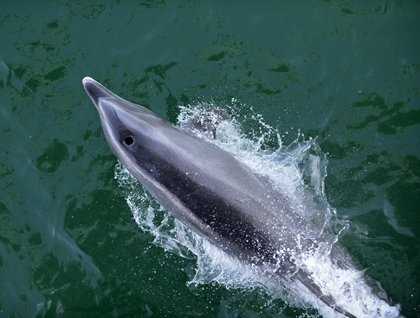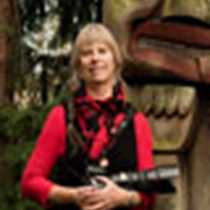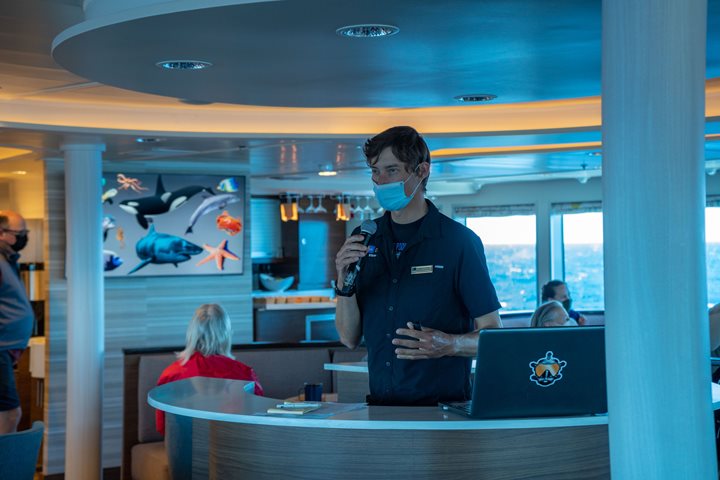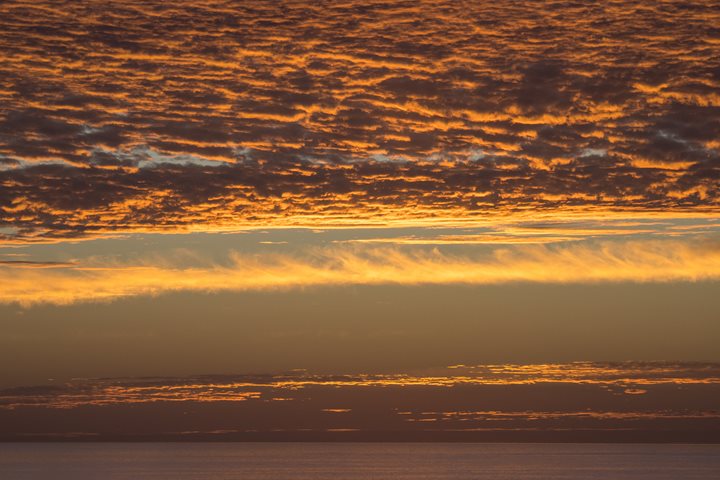As the first light of day began its easterly rise over the ocean and land, National Geographic Sea Bird was cruising north in the open Pacific Ocean. The night crossing had been calm, with just a hint of ocean swell. We were rocked through the night and gently carried north along the western side the Baja Peninsula. We were heading towards our morning destination of La Entrada...the entrance to Bahia Magdalena and separation between the two barrier islands of Isla Margarita to the south and Isla Magdalena to the north. Opening the second half of our journey, the next three days would focus on the protected coastal lagoons of Bahia Magdalena where California gray whales come each winter for birthing and mating. As soon as the Sea Bird entered Bahia Magdalena, the protection of the barrier islands created even calmer seas and excellent conditions for observing our new environment. The islands were made up of small mountain ranges and vast expanses of sand dunes.
As we continued north into the bay our ship slowed down to pick up our pilot Alejandro Camacho, a local fisherman from the town of Lopez Mateos. He would be piloting our vessel through the narrow waters of the Hull Canal, which leads from the southern end of Bahia Magdalena to its northern waters of Boca de Soledad where we would be spending the next two days. The Hull Canal is a natural waterway that separates Isla Magdalena from the mainland of the Baja Peninsula. It is lined with Mangroves a unique ecosystem that provides a nursery environment for a myriad of different species both above water and below.
The leaf litter produced by mangroves provides the basic nutrients for a nursery that nurtures the development of many species. Most of the litter is colonized and partially broken down by bacteria and fungi. These microorganisms enhance the food value of the litter by converting carbohydrates to proteins. The enriched leaf litter particles are then consumed by detrital feeders such as amphipods, prawns, and mullet. The highly efficient utilization of mangrove litter provides a rich food source, which together with shade and shelter of the mangroves makes up the components of a saltwater nursery nourishing birds, fish, shell fish, and eventually many marine and land animals.
As the Sea Bird moved north along the Hull Canal we saw the benefits of this protected nursery environment in the rich birdlife nesting and roosting in the mangroves; not to mention a casual glance over the bow to watch bottlenose dolphins riding the pressure wave created by our ship. Dolphins would see the Sea Bird cruising north up Hull Canal, swim rapidly over to find the sweet spot under our bow and looking up...they would watch us, watch them!
As we continued cruising the first heart-shaped blows of gray whales appeared at the surface of the water. Single animals and cow/calf pairs were seen along the way as the Sea Bird continued north past La Florida, another territorial nursery marker for gray whales.
In the late afternoon we passed the small town of Lopez Mateos. The Sea Bird slowed as we sent our pilot Alejandro home to his family, continuing a short distance to our anchorage for the next couple of days. Expedition landing craft were lowered, and soon those interested were brought ashore to explore storm blown mangroves, small saltwater ponds and the windy slopes of sand dunes as far as one could see...what a way to see the last light of day and ponder a quote by Joseph Wood Krutch:
“We come to see the world; and there are still a sizable minority who find the vanishing world dominated by nature rather than by man, one of the things most worth seeing.”







